He
Hébert, Jacques (1757-1794)
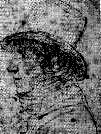 Extreme Left-wing agitator who became the main voice of the sansculottes during the French Revolution. The Hébertists pressured the Revolutionary government into taking its most extrreme measures. His pseudonym was Père Duchesne.
Extreme Left-wing agitator who became the main voice of the sansculottes during the French Revolution. The Hébertists pressured the Revolutionary government into taking its most extrreme measures. His pseudonym was Père Duchesne.
Born into a bourgeois family, Hébert moved to Paris where he lived in poverty from 1780 until the outbreak of the Revolution in 1789, after which he began his career as a journalist, writing colurful, sacrilegious political satires. His newspaper, Le Père Duchesne, appeared in November 1790 and soon became the most widely read newspaper of the French Revolution,attacking the church and the aristocracy.
As a representative to the Revolutionary Commune he helped plan the popular insurrection that overthrew the monarchy on Aug. 10, 1792. He had the Cathedral of Notre-Dame and some 2,000 other churches converted to Temples of Reason. In December Hébert was elected assistant procurator-general of the Commune, which had become the governing body of Paris. As a Jacobin deputy to the National Convention, he waged a fierce campaign against the Girondists, using Le Père Duchesne as a mouthpiece for the sansculottes, demanding the death sentence for the king and the establishment of a revolutionary government.
Hébert’s supporters organized the massive demonstrations of Parisian workers in September 1793 forcing the Convention to institute a state-controlled economy and initiate the Reign of Terror.
Once the Committee of Public Safety, the Convention’s executive body, had consolidated its power by early 1794, it turned against Hébert. The right wing of the Jacobins, behind Danton, attacked Hébert as extremists. In March 1794, with food shortages stimulating popular discontent, Hébert called for a popular uprising. The sansculottes did not respond, however, and on March 14 the Committee of Public Safety had Hébert arrested. He and 17 of his followers were guillotined 10 days later. His execution cost the government the support of the sansculottes and contributed to the collapse of the Jacobin dictatorship in July 1794.
Heckert, Fritz (1884–1936) .
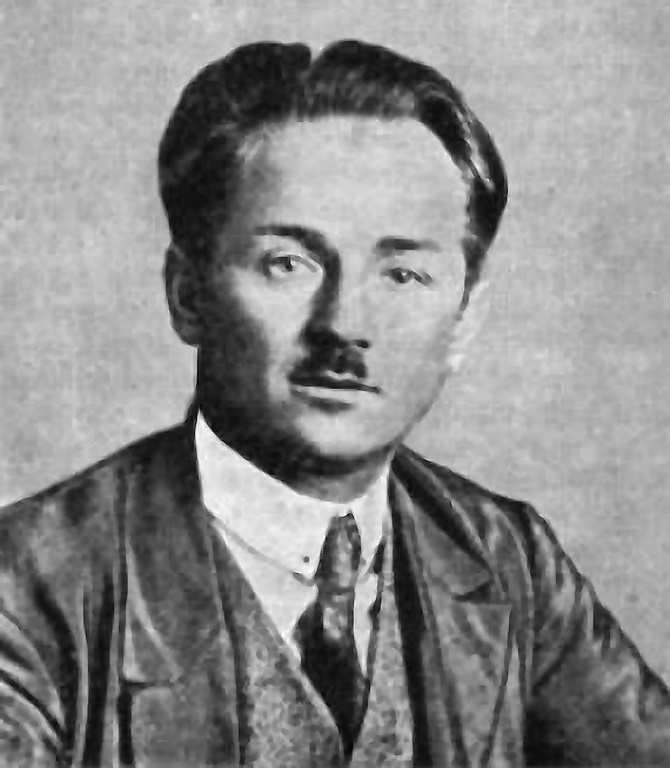 Son of worker, building-worker. In SPD (Sozialistische Partei Deutschlands, Social-Democratic Party) in 1902, itinerant worker, settled in Berlin and Bremen, then in Switzerland during 1908–11, where, through his wife, contacted Bolsheviks. In 1912 in Chemnitz, led builders’ union and brought in Brandler. Created strong Spartacus group, joined USPD which he led locally. Arrested in October 1918, chaired workers’ and soldiers’ council in Chemnitz in November. Member of KPD(S) at its foundation, brought into it USPD organisation in Chemnitz. Candidate member of Zentrale in 1919, full member in 1921, assistant in trade-union department of Zentrale. Important role in clandestine preparations in 1923. Minister for the Economy in Zeigner’s government in Saxony in October 1923. Member of KPD (Kommunistischen Partei Deutschlands/German Communist Party) right wing, joined centre tendency, elected to Politbureau in 1928. Member of Comintern Presidium from 1928, representative on RILU, and later in the Communist International. Was seriously wounded in 1931 by SA. Died in Moscow, his funeral urn placed in Kremlin wall.
Son of worker, building-worker. In SPD (Sozialistische Partei Deutschlands, Social-Democratic Party) in 1902, itinerant worker, settled in Berlin and Bremen, then in Switzerland during 1908–11, where, through his wife, contacted Bolsheviks. In 1912 in Chemnitz, led builders’ union and brought in Brandler. Created strong Spartacus group, joined USPD which he led locally. Arrested in October 1918, chaired workers’ and soldiers’ council in Chemnitz in November. Member of KPD(S) at its foundation, brought into it USPD organisation in Chemnitz. Candidate member of Zentrale in 1919, full member in 1921, assistant in trade-union department of Zentrale. Important role in clandestine preparations in 1923. Minister for the Economy in Zeigner’s government in Saxony in October 1923. Member of KPD (Kommunistischen Partei Deutschlands/German Communist Party) right wing, joined centre tendency, elected to Politbureau in 1928. Member of Comintern Presidium from 1928, representative on RILU, and later in the Communist International. Was seriously wounded in 1931 by SA. Died in Moscow, his funeral urn placed in Kremlin wall.
Hegel, Georg Wilhelm Friedrich (1770-1831)
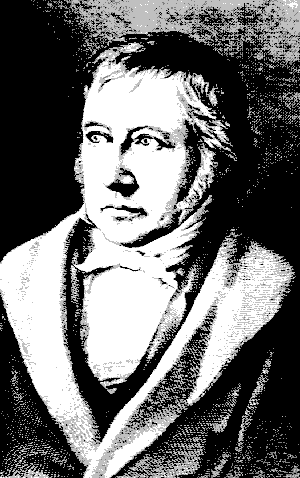 The most important representative of classical German philosophy; he represented an objective idealism; a brilliant investigator of the laws of dialectic, which he was the first consciously to apply. An understanding of the influence Hegel had on Marx and Engels, and their opinions of Hegel:
The most important representative of classical German philosophy; he represented an objective idealism; a brilliant investigator of the laws of dialectic, which he was the first consciously to apply. An understanding of the influence Hegel had on Marx and Engels, and their opinions of Hegel:
Engels wrote in his review of Marx's The Critique of Political Economy:
"The Hegelian method, on the other hand, was in its existing form quite inapplicable. It was essentially idealist and the main point in this case was the elaboration of a world outlook that was more materialist than any previous one. Hegel's method took as its point of departure pure thought, whereas here the starting point was to be inexorable facts. A method which, according to its own admission, "came from nothing, through nothing, to nothing" [Hegel, Science of Logic, Part I, Section 2] was by no means appropriate here in this form. Nevertheless, of all the available logical material, it was the only piece which could be used, at least, as a starting-point. It had not been criticised, nor overcome; not one of the opponents of the great dialectician had been able to make a breach in its proud structure; it fell into oblivion, because the Hegelian school had not the slightest notion what to do with it. It was, therefore, above all necessary to subject the Hegelian method to through-going criticism.
"What distinguished Hegel's mode of thought from that of all other philosophers was the tremendous sense of the historical upon which it was based. Abstract and idealist though it was in form, yet the development of his thoughts always proceeded parallel with the development of world history and the latter is really meant to be only the test of the former. If, thereby, the real relation was inverted and stood on its head, nevertheless, the real content entered everywhere into the philosophy; all the more so since Hegel -- in contrast to his disciples -- did not parade ignorance, but was one of the finest intellects of all time. He was the first who attempted to show a development, an inner coherence, in history; and while today much in his philosophy of history may seem peculiar to us, yet the grandeur of his fundamental outlook is admirable even today, whether one makes comparison with his predecessors or, to be sure, with anyone who, since his time, has indulged in general reflections concerning history. Everywhere, in his Phenomenlogy, Esthetics, History of Philosophy, this magnificent conception of history prevails, and everywhere the material is treated historically, in a definite, even if abstractly distorted, interconnection with history.
"This epoch-making conception of history was the direct theoretical premise for the new materialist outlook, and already this constituted a connecting link with the logical method, too. Since this forgotten dialectics had led to such results even from the standpoint of "pure thinking", and had, in addition, so easily settled accounts with all preceding logic and metaphysics, there must at any rate have been more to it than sophistry and hair-splitting. But the criticism of this method, which all official philosophy had fought shy of and still does, was no trifle.
Marx later wrote in his preface to the second edition of Capital (Volume 1):
"My dialectic method is not only different from the Hegelian, but is its direct opposite. To Hegel, the life-process of the human brain, i.e., the process of thinking, which, under the name of "the Idea," he even transforms into an independent subject, is the demiurgos of the real world, and the real world is only the external, phenomenal form of "the Idea." With me, on the contrary, the ideal is nothing else than the material world reflected by the human mind, and translated into forms of thought.
"The mystification which dialectic suffers in Hegel's hands by no means prevents him from being the first to present its general form of working in a comprehensive and conscious manner. With him it is standing on its head. It must be turned right side up again if you would discover the rational kernel within the mystical shell."
See: The Hegel Reference Archive
Heidegger, Martin (1889-1976)
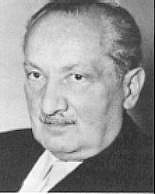 Founder of German Existentialism; accepted the ideology of Nazism publicly in 1933; developed theory of a priori forms of personality (care, dread, concern, etc.) which he in turn developed as a theory of existence. Heidegger drew upon Kierkegaard and Husserl.
Founder of German Existentialism; accepted the ideology of Nazism publicly in 1933; developed theory of a priori forms of personality (care, dread, concern, etc.) which he in turn developed as a theory of existence. Heidegger drew upon Kierkegaard and Husserl.
As a young Catholic, who had studied Brentano while still at school, Heidegger joined the Jesuits as soon as he left school and went on to study theology at the University of Freiburg.
Heidegger's philosophy drew on Plato, Aristotle, and the early Gnostics, but he was particularly interested in Søren Kierkegaard and Friedrich Nietzsche, the vitalist Wilhelm Dilthey and his teacher Edmund Husserl.
At Freiberg, Heidegger studied under Husserl, and Heidegger's work must be read through the lens of Phenomenology, as concerning the different ways of Being, not as studies of psychology or sociology.
However, instead of following in his master's footsteps, Heidegger took up a position at Marburg and in 1927 published the almost unreadable but highly acclaimed Being and Time which, in his view, marked a sharp break from Husserl. This book strongly influenced Jean-Paul Sartre and many other Existentialists. In the English-speaking world, however, its influence was negligible for several decades.
In Being and Time, Heidegger's asks “What is the meaning of Being?”, what lies behind the obviousness of everyday life and the empirical questions of natural science. In 1928 Heidegger resigned his post at Marburg and returned to Freiburg to be Husserl's successor.
Heidegger held that Western thought had undergone a deep fall (Verfall) as a result of technological development resulting in alienation (Entfremdung), or an “inauthentic way of being.”
Following Husserl, Heidegger held that it is the Phenomenology, not scientific investigation, which shows man's ways of Being. He held that the distinction between subject and object, the separation between man and his environment, is not immediate but comes only later as a result of conceptualisation. To get back to “Thinking of Being” Heidegger employed linguistic techniques, developing words of his own invention, not only from German, but even from Greek.
When Hitler assumed power in November 1933, German universities were pressured to eliminate Jewish scholars and “Jewish Doctrines”, such as relativity! The anti-Nazi Rector at Freiburg resigned in protest, and the teaching staff unanimously elected Heidegger as his successor. In his inauguration speech Heidegger gave a clear affirmation of Nazism. Heidegger also gave solidly pro-Hitler speeches on subsequent occasions: “The Führer himself and he alone is the German reality, present and future, and its law.”.
Heidegger joined the Nazi Party and did not try to leave it, but his relations with the party deteriorated. He resigned as rector at the beginning of 1934 but only denounced the Nazis after the war was over. At the de-nazification hearings at Freiburg University in 1945 found that he “made an essential contribution to the legitimation of this revolution in the eyes of educated Germans.” As a result he was banned from teaching at the universtity level. The ban was lifted in 1951.
Further Reading: Basic Problems of Phenomenonology.
Heine, Heinrich (1797-1856)
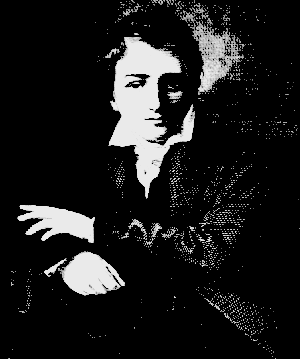 German poet and revolutionary democrat, friend of Karl Marx, first to recognise the underlying revolutionary character of classical German Philosophy.
German poet and revolutionary democrat, friend of Karl Marx, first to recognise the underlying revolutionary character of classical German Philosophy.
Heinzen, Karl (1809-1880)
A doctor by profession. Bourgeois democrat. Editor of several German-American papers. Opponent of Marx and Engels. A petty bourgeois who held that the despotic powers of the German princes were the root of all evil--hence he got the nickname of "the prince-killer." He regarded the "class struggle" as a mad idea of the Communists. In support of his views he had cited the Chartist leader, Ernest Jones.
Heisenberg, Werner (1901-1976)
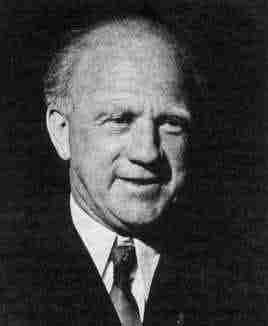 German Physicist who helped to establish quantum mechanics and made important contributions to the theory of turbulence, the atomic nucleus, ferromagnetism, cosmic rays, and elementary particles; co-author with Niels Bohr of the Principle of Complementarity, and noted for the well-known “Heisenberg Uncertainty (or Indeterminacy) Principle”, Heisenberg did not share the widespread sceptical interpretation placed on this principle, which many have sought to use to substantiate subjectivist interpretations of modern physics.
German Physicist who helped to establish quantum mechanics and made important contributions to the theory of turbulence, the atomic nucleus, ferromagnetism, cosmic rays, and elementary particles; co-author with Niels Bohr of the Principle of Complementarity, and noted for the well-known “Heisenberg Uncertainty (or Indeterminacy) Principle”, Heisenberg did not share the widespread sceptical interpretation placed on this principle, which many have sought to use to substantiate subjectivist interpretations of modern physics.
Heisenberg studied physics with his life-ling friend Wolfgang Pauli, under Arnold Sommerfeld at the University of Munich and did his PhD on turbulence. Following Pauli to the University of Göttingen, he studied there under Max Born and in 1924 went to study under Niels Bohr in Copenhagen.
Heisenberg was aware of growing problems with Bohr's model of the atom and wanted to develop a new model to cope with the growing contradictions.
In 1925, Heisenberg solved problem of how to account for the discrete energy states of an anharmonic oscillator which opened the way for an alternative explanation of the discrete energy levels founds in Bohr's model of the atom and a new interpretation of the basic concepts of quantum mechanics. Heisenberg took as unobservable the supposed trajectory of a particle between its interactions in order to be able to construct a theory which deal only with the measurable interaction events. Consequently, physical variables would be represented by discrete arrays of numbers. Under the influence of Albert Einstein's paper on relativity, he took the variables to represent only measurable quantities. Born showed that these arrays obeyed the rules of matrix algebra, and with Heisenberg, named the new quantum theory “matrix mechanics”. Each matrix specified the possible values for a physical variable, and the terms of a matrix were taken to generate probabilities of occurrences of states and transitions. Using the matrix mechanics to interpret the spectrum of the helium atom and other atomic and molecular spectra, ferromagnetic phenomena, and electromagnetic behaviour, Heisenberg demonstrated the validity of the conception experimentally.
In 1927, Heisenberg published the Indeterminacy, or Uncertainty, Principle in which he endeavoured to relate the matrix-entities to the intuitively familiar concepts of classical physics. If q is the position-coordinate of an electron, and p a measurement of its momentum, then delta-q * delta-p > h (Planck's constant), where delta-q and delta-p are the standard deviation of measurements of p and q. One of the characteristics of matrix algebra is that the law of commutation for multiplication does not hold (a*b not= b*a). Momentum and position are thus characterised as "non-commuting variables", from which it follows that the determination of each of the two variables cannot be deemed to make sense independently of one another, the two entities cannot have a separate meaning independent of one another; the Indeterminacy Principle stated above gives a definite quantitative measure to this degree of interdependence. This conception has a close parallel to Einstein's discovery that measurements of space and time cannot be conceived of measuring entities independent of one another.
This result has been interpreted by subjectivist writers to mean that in some way what is at issue is the Mind of the person carrying out the measurement which is determining the interaction, but this idea hinges on a total misunderstanding of the issue. The problem for conception of these processes arises from the fact that for everyday, pictorial thinking, position and momentum are distinct entities; in relation to quantum phenomena, these concepts are meaningful only in relation to interactions of a particle, and quite distinct interactions are implied in the measurement of momentum or position. This is not at all the case in everday experience.
Initially, Heisenberg had arrived at the matrix-mechanics through the solution of mathematical problems and did not see the matrices as representations of particulate properties such as momentum and position. It was Bohr who showed how the Indeterminacy Principle expressed the relationship between the wave and particle conceptions of quantum phenomena and gave a quantitative expression to the Complementarity Principle.
Bohr and Heisenberg generalised the principle of complementarity to take account of a range of physical variables and the measurement process on which each depends. The principle and the difficulties which flow from its interpretation, was the subject of intense controversy among all the great physicists of that time, with Einstein, Schrödinger and Louis de Broglie all disputing Bohr and Heisenberg's interpretation of the principle of complementarity.
From 1927 to 1941 Heisenberg worked at the University of Leipzig and from 1941 to 1945 in Berlin. He never publicly opposed the Nazi regime and worked with Otto Hahn on the development of a nuclear reactor though he failed to develop an effective program for nuclear weapons. After the war he became director of the Max Planck Institute for Physics and Astrophysics at Göttingen, moving with the institute to Munich.
After the War Heisenberg began work on spinors, complex vector-like representations, hoping to find universal symmetries in nature whcih would explain the wide variety of elementary particles.
Although he early, and indirectly, came under the influence of Ernst Mach, Heisenberg, in his philosophical writings about quantum mechanics, vigorously opposed the Logical Positivism developed by philosophers of science of the Vienna Circle. According to Heisenberg, what was revealed by active observation was not an absolute datum, but a theory-laden datum, contextualized by observational situations. He took classical mechanics and electromagnetics, which articulated the objective motions of bodies in space-time, to be permanently valid, though not applicable to quantum mechanical interactions; he took causality to apply in general not to individual quantum mechanical systems but to mathematical representations alone, since particle behaviour could be predicted only on the basis of probability.
Further Reading: See his History of Quantum Theory.
Helmholtz, Hermann von (1821 - 1894)
One of the greatest scientists of the 19th century, made fundamental contributions to physiology, optics, electrodynamics, mathematics, and meteorology, but best known for his statement of the law of the conservation of energy and his successful struggle against vitalism; in attempting to develop a consistent empiricism, he formulated an epistemology based on a conception of sensations as ‘symbols’ of external reality: “as the quality of our sensations informs us of the properties of external action by which this sensation is produced, the latter can be regarded as its sign, but not as its image”.
A sickly child, his father who was a teacher of philosophy and literature at the Potsdam Gymnasium, taught him Greek, Latin, French, English, and Italian, and the philosophy of Kant and Fichte at a young age. Much of Helmholtz's later work was devoted to refuting the “Nature Philosophy” he had been taught by his father.
He attended the Friedrich Wilhelm Medical Institute in Berlin under the great physiologist, Johannes Müller, receiving a free medical education on the condition that he serve eight years as an army doctor. He also attended the lectures in physics and worked his way through higher mathematics from the textbooks, and taught himself the piano.
Shortly after graduating however, he was relieved from military duties and soon became assistant professor and director of the Physiological Institute in Königsberg and in 1855 was appointed professor of anatomy and physiology at the University of Bonn. More and more his interests moved towards physics, and in 1882 he was elevated to the nobility and in 1888, appointed director of the Physico-Technical Institute at Berlin, where he spent the remainder of his life.
One of the central interests of the latter part of the nineteenth century was investigation of the relationship between human beings and Nature by means of studying the physiology of perception. The majority of biologists of his day believed in the existence of a life force of some kind, inhabiting the bodies of living beings and responsible for their vitality. From an early age, Helmholtz set himself not only to dispense with this vitalism, but also to disprove Immanuel Kant’s idea of the innate faculties of Reason. Helmholtz insisted that all knowledge came through the senses, and he rejected all forms of deduction of natural law from philosophical considerations and conceptions of mystical “life forces.”
At the beginning of his career in Johannes Müller's laboratory, Helmholtz determined himself to tackle the problem of uncovering the physical and chemical processes at work in living organisms. His doctoral thesis on the connection between nerve fibres and nerve cells soon led him to the problem of explaining the generation of animal heat on the basis of basic physics and chemistry, intending in this way to absolutely refute the doctrines of vitalism, which held that body heat was derived from the action of the “life force.” His general considerations in preparing this work led to his formulation of the Law of Conservation of Energy (‘Force’ as he called it). His paper, published in 1847, marked an epoch in the history of natural science. In 1850, Helmholtz succeeded in measuring the speed of transmission of nerve impulses at 27 metres per second, an observation which contributed to undermining vitalism.
With painstakingly detailed investigation of the mechanisms of sight, and later studies of the sensations of audible tones, Helmholtz intended to undermine Kant's conception of the innate comprehension of space and time, and he published a number of exemplary works on the physiology of sight and hearing.
Helmholtz showed exactly how the sense of vision created the idea of space. Space, according to Helmholtz, was a learned, not an inherent, concept. Moreover, Helmholtz also attacked Kant's insistence that space was necessarily three-dimensional because that was how the mind had to conceive it. Using his considerable mathematical talents, he investigated the properties of non-Euclidean space and showed that these could be conceived and worked with as easily as the geometry of three dimensions.
Helmholtz's mathematical talents were exceptional. He attacked and solved equations that had long frustrated physicists and mathematicians. In 1858 he published the paper On the Integrals of Hydrodynamic Equations to Which Vortex Motions Conform. This was not only a mathematical triumph, but also seemed to provide a key to the fundamental structure of matter. One of the consequences that flowed from Helmholtz's mathematical analysis was that vortices of an ideal fluid were amazingly stable; they could collide elastically with one another, intertwine to form complex knot-like structures, and undergo tensions and compressions, all without losing their identities. In 1866, Kelvin proposed that these vortices, if composed of the ether that was presumed to be the basis for optical, electrical, and magnetic phenomena, could act exactly like primeval atoms of solid matter. Thus the ether would become the only substance in the cosmos, and all physical phenomena could be accounted for in terms of its properties.
Helmholtz also did significant work on the mathematics of electrodynamics and spent his last years unsuccessfully trying to reduce all of electrodynamics to a minimum set of mathematical principles, an attempt in which he had to rely increasingly on the supposed mechanical properties of the ether.
In 1881, in a lecture delivered in London, Helmholtz argued for the particulate nature of electricity, leading to the coining of the word “electron”. Helmholtz came close to his goal of deducing all electromagnetic effects from properties of the ether, using his vortex hypothesis, and the discovery of radio waves by Hertz in 1888 was seen as confirmation of his theory. Ultimately, Helmholtz's theories were rendered obsolete by Einstein's theory of special and general relativity, after which the concept of “ether” was abandoned.
Helmholtz's work was the end product of the development of classical mechanics. He pushed it as far as it could go. When Helmholtz died in Berlin in 1894, the world of physics was poised on the brink of revolution. The discovery of X rays, radioactivity, and relativity led to a new kind of physics in which Helmholtz' achievements, although impressive, had little to offer.
Further Reading: See his speech, Facts of Perception, summarising his epistemological views.
Henderson, Arthur (1863-1935)
Right-wing Labour Politician. General organizer of the Friendly Society of Ironfounders from 1902; an active liberal, he supported the formation of the Labour Representation Committee in 1906, becoming a Labour MP. Member of the National Executive of the Labour Party until his death. In 1914 strongly supported Britain's part in the war and army recruitment; Minister in Lloyd George's Wartime Cabinet. In 1917 he went to Russia to persuade the Provisional Government to uphold the Entente with Britain, but soon afterwards had to resign from the Cabinet for supporting the Stockholm Conference. Prime mover in rejecting the affiliation of the Communist Party to the Labour Party in 1920. Home Secretary in the 1924 Labour Government and thereafter Chief Whip. Foreign Secretary in the 1929 government. Helped to revive the reformist Second International in the 1920s. A strong supporter of MacDonald, he was the only member of the Executive to vote against his expulsion from the party in 1931. Chairman of abortive Geneva disarmament conference 1932-35; given Nobel Peace Prize, 1934.
Heraclitus (c. 544-483BC)
Materialist philosopher and exponent of dialectics, known as "The Obscure"; held Fire to be prime material in nature, being the most capable of change and motion; "The world was created by none of the gods or men, but was, is, and will be eternally living fire, regularly becoming ignited and regularly becoming extinguished" - all things in nature are in continuous flux, changing into their opposites; struggle is universal, etc.
See Hegel on Heraclitus.
Herbst, Josephine (1897-1969)
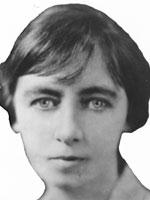 U.S. writer, most known for her journalism in radical publications such as
New Masses and Partisan Review and author of proletarian fiction including, Nothing is Sacred (1928), Money for Love (1929), Pity is not Enough (1933) and The Executioner Waits (1934). These novels that incorporated her socialist beliefs made her an important literary figure in radical politics in the 1930s.
U.S. writer, most known for her journalism in radical publications such as
New Masses and Partisan Review and author of proletarian fiction including, Nothing is Sacred (1928), Money for Love (1929), Pity is not Enough (1933) and The Executioner Waits (1934). These novels that incorporated her socialist beliefs made her an important literary figure in radical politics in the 1930s.
In the 1940s she published Satan's Sergeants (1941) and Somewhere the Tempest Fell (1947).
On ongoing collection of Herbst's work are archived in the Josephine Herbst pages in the Women and Marxism section.
Herriot, Edouard (1872-1957)
The leader of the liberal Radical (or Radical Socialist) Party of France, an advocate of class collaboration with the workers' parties, and premier, 1924-25, 1926 (for two days), 1932 (for six months).
Hervé, Gustave (1871-1944)
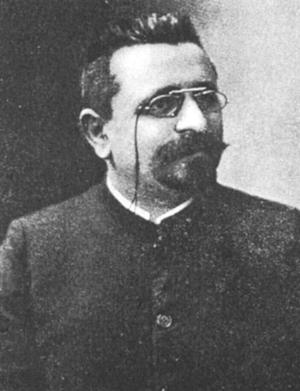 At one time an anarchist, prior to the First World War Hervé headed the extreme left inside the French SP, was delegate from the SP to the Second International Congress in Stuttgart in 1907, where he spoke on Anti-militarism. Editor and publisher of the periodical Guerre Sociale (Class War), he signed his articles with the pen-name Sans Patrie (Man without a Fatherland). But on the outbreak of war he renamed the paper Victoire and pronounced himself a ‘republican’ monarchist, hailing the Russian Tsar as an ally. After the war he emerged as a rabid monarchist and reactionary.
At one time an anarchist, prior to the First World War Hervé headed the extreme left inside the French SP, was delegate from the SP to the Second International Congress in Stuttgart in 1907, where he spoke on Anti-militarism. Editor and publisher of the periodical Guerre Sociale (Class War), he signed his articles with the pen-name Sans Patrie (Man without a Fatherland). But on the outbreak of war he renamed the paper Victoire and pronounced himself a ‘republican’ monarchist, hailing the Russian Tsar as an ally. After the war he emerged as a rabid monarchist and reactionary.
Herzen, Alexander (1812-1870)
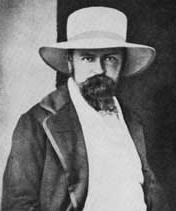 Russian author and revolutionary who "was the founder of 'Russian' socialism, of 'Narodnikism." He belonged to the generation of revolutionaries of the landowning class in the first half of the nineteenth century. After the defeat of the Revolution of 1848, in "that period of history when the revolutionary spirit of bourgeois democracy was already dead and the revolutionary consciousness of the socialist proletariat was not yet mature" (Lenin), Herzen became a sceptic. He had been living abroad since the end of the 1840s and did not believe in the revolutionary movement in Russia, though in the free Russian press which he had established abroad he supported every revolutionary manifestation in Russia. Marx criticised Herzen for idealising the Russian village commune and failing to see the signs of its decay.
Russian author and revolutionary who "was the founder of 'Russian' socialism, of 'Narodnikism." He belonged to the generation of revolutionaries of the landowning class in the first half of the nineteenth century. After the defeat of the Revolution of 1848, in "that period of history when the revolutionary spirit of bourgeois democracy was already dead and the revolutionary consciousness of the socialist proletariat was not yet mature" (Lenin), Herzen became a sceptic. He had been living abroad since the end of the 1840s and did not believe in the revolutionary movement in Russia, though in the free Russian press which he had established abroad he supported every revolutionary manifestation in Russia. Marx criticised Herzen for idealising the Russian village commune and failing to see the signs of its decay.
Hesse, Max (1895–1964)
Son of metalworker, co-founder of metalworkers’ union, mechanic, member of Socialist Youth in 1910, worked in Scandinavia, then in Siemens. Conscripted in 1914, three times wounded, discharged in 1916, member of group of revolutionary shop-stewards. Recalled to army, deserted, sentenced to six years imprisonment, freed by November Revolution. Member of workers’ council in Spandau. In KPD(S) at its foundation. In jail during March-September 1919. Leader of VKDP (Vereinigte Kommunistische Partei Deutschlands/United Communist Party of Germany) in Charlottenburg, and chairman of Lorenz workers’ council during 1920–3. Member of KPD (Kommunistischen Partei Deutschlands/German Communist Party) Left, took part in Moscow in discussions in September 1923, then sent to Saxony. Member of ECCI during 1924–6, in left opposition, reproved in 1927 and then expelled. Co-founder of Leninbund. Returned to SPD (Sozialistische Partei Deutschlands, Social-Democratic Party) in 1929, chairman of it in Charlottenburg and of a works’ council. Arrested in 1933, escaped from Oranienburg, emigrated to Netherlands, arrested, was not identified, escaped in 1944, returned to Germany in 1947.
Hess, Moses (1812-1875)
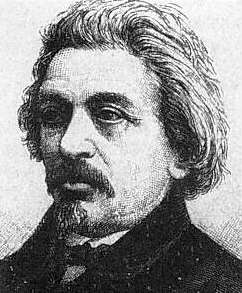 German radical publicist, one of the represntatives of “true socialism” in the mid-1840s.
German radical publicist, one of the represntatives of “true socialism” in the mid-1840s.
See Karl Marx and Moses Hess by Sidney Hook, 1934
See Moses Hess Archive.